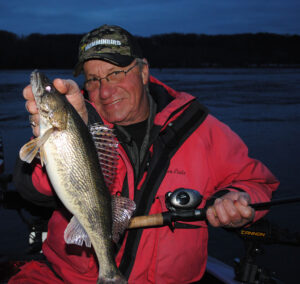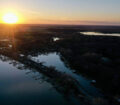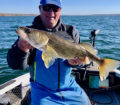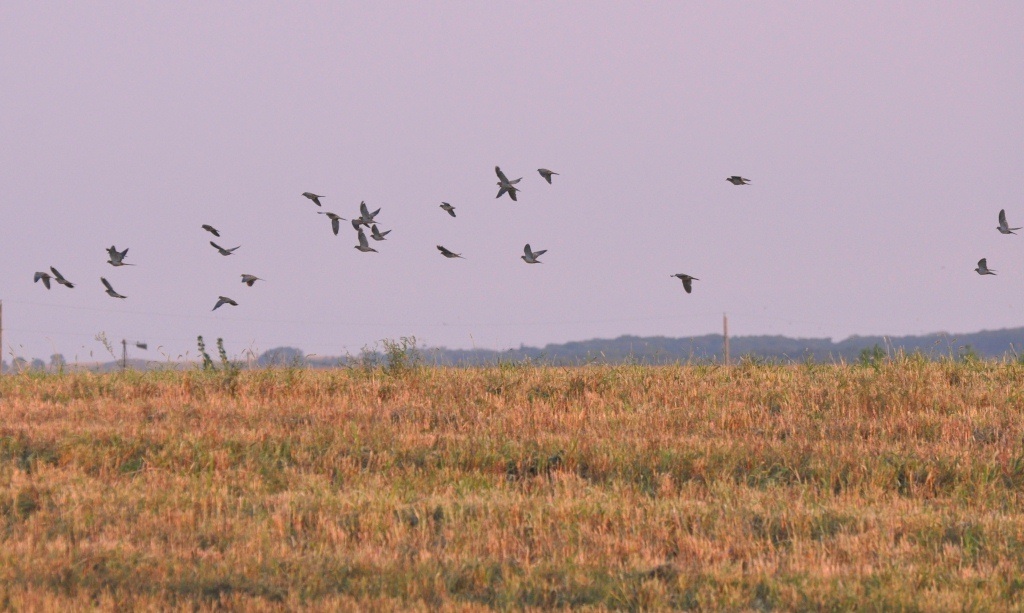By Bob Jensen
Fishing the Midwest Fishing Team

(photo by Bob Jensen) Sauger and walleyes are a common catch below dams on larger rivers.
A fish was swimming upriver. What did the fish say when it swam into a concrete obstruction in the river? “Dam”!
Okay, that was kind of corny, but the dams found on the rivers that intersect North America have a special place in the memories of many anglers. The area directly below dams on rivers of all sizes have provided outstanding fishing for several species of fish for a long time.
As a youngster, I spent many afternoons in waders below dams on small rivers. My dam fishing mostly involved walleyes in the spring. The walleyes moved upstream to spawn until a dam stopped that movement.
For a couple of weeks, lots of walleyes were gathered below the dam. Fishing was good, especially for the smaller males. After the spawn, the fish would move downstream and spread out. Not so many years ago, the area directly below the dam on many smaller rivers were popular gathering spots for early season anglers.
Many of us also have memories of fishing from a boat below a variety of dams on larger rivers in the fall and winter. There is a significant fall upriver run of walleyes and sauger on many larger rivers. They move close to the dam and stay there over the colder winter months. Dams are a part of many angler’s history. Today though, many of the traditional gathering spots below dams aren’t as popular as they once were. Things change.
One change that explains why anglers aren’t fishing below dams on small rivers as much is that the rivers have aged. Now, instead of walleyes being the primary gamefish, other species, particularly smallmouth bass, have become more abundant. And smallmouth don’t seek out current to spawn as much as walleyes do, so we don’t see them gathering below dams like walleyes.
Another reason dams are going to play an even lesser role in fishing is that good numbers of dams are being removed. And that’s not necessarily a bad thing.
Dams were built mostly between 1930 and 1970. They were constructed to provide flood control, recreation, and power. It didn’t take long for the power companies to learn that the power generated from dams wasn’t as efficient as hoped.
Also, on some rivers, due to siltation above the dam, flood control below that dam wasn’t so good. And when the dam altered the natural flow of the river, the watery habitat downstream was also altered and native fish species were negatively impacted. The folks who thought building dams was a good idea changed their minds. In the past several decades, almost 2,200 dams have been removed from rivers across North America.
The construction and removal of dams is, like many things, controversial. In their day, dams provided some needed services. They also created some social and environmental issues. For this fisherman and many others, the small dams found across the Upper Midwest provided some very nice memories.
Due to the removal of a good number of these dams, we need to find other ways and places to create fishing memories. Fortunately, for most of us, that’s not hard to do.



















